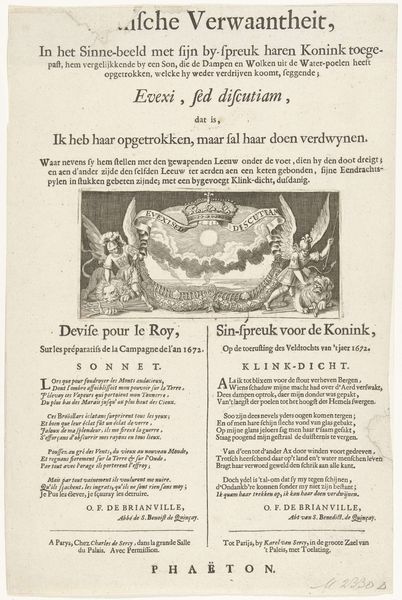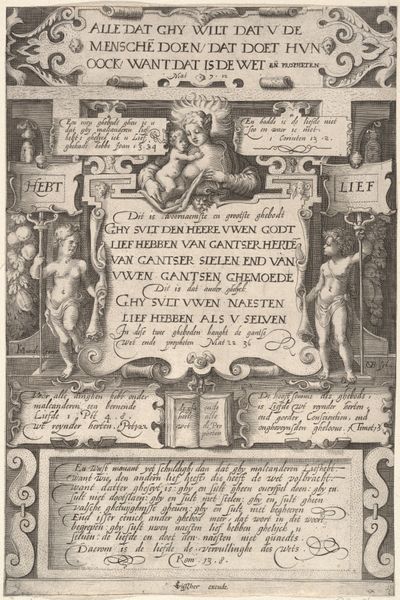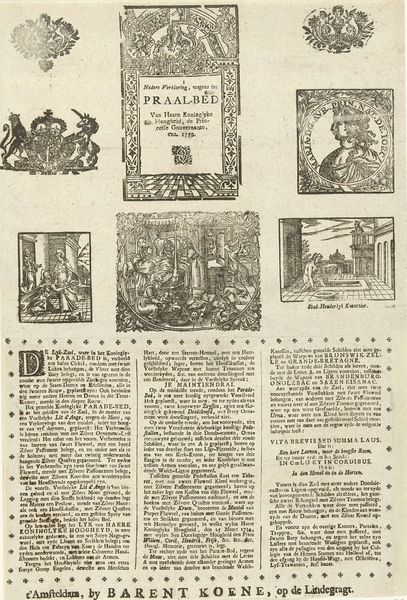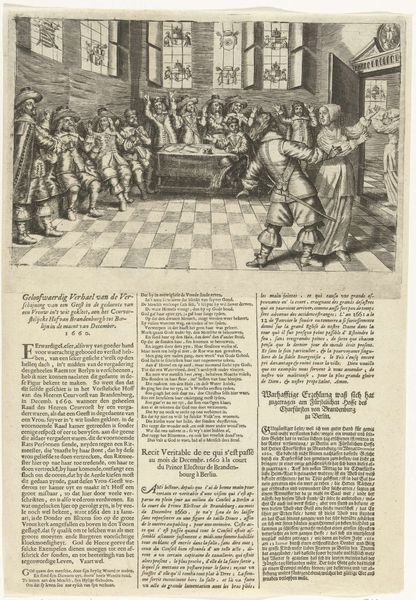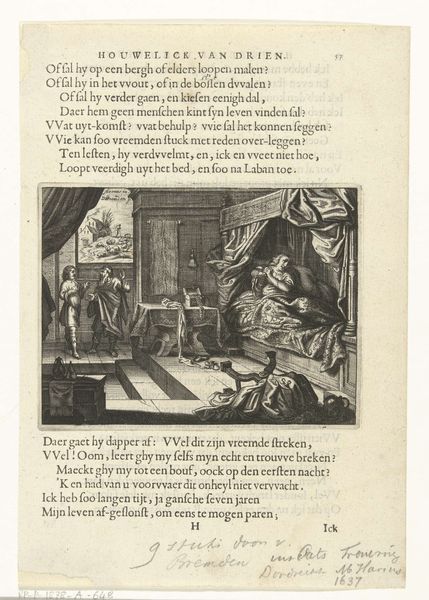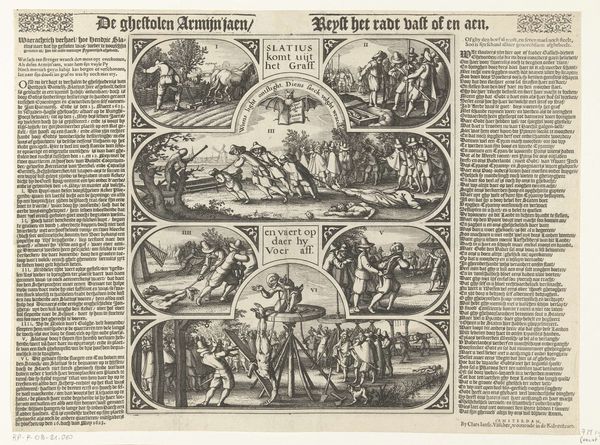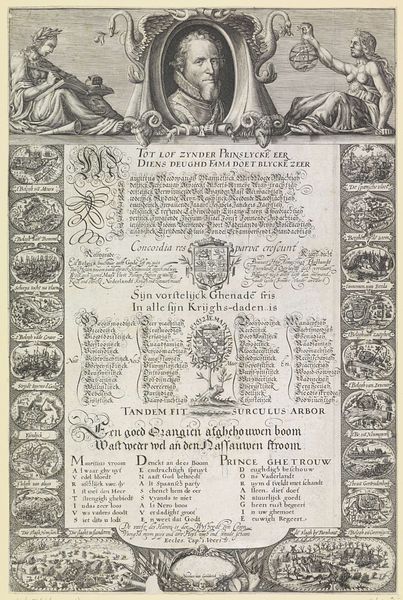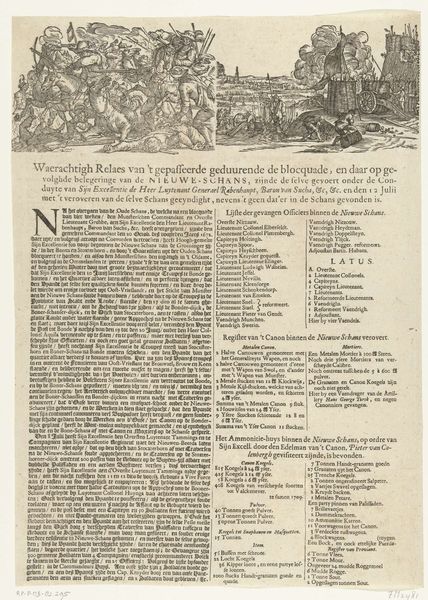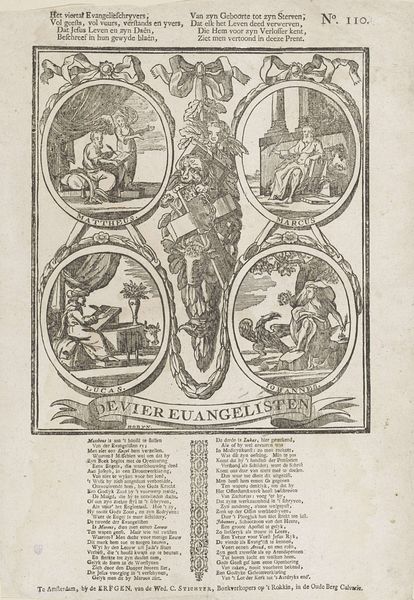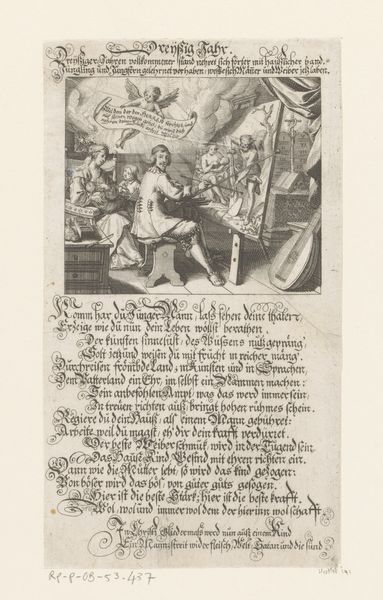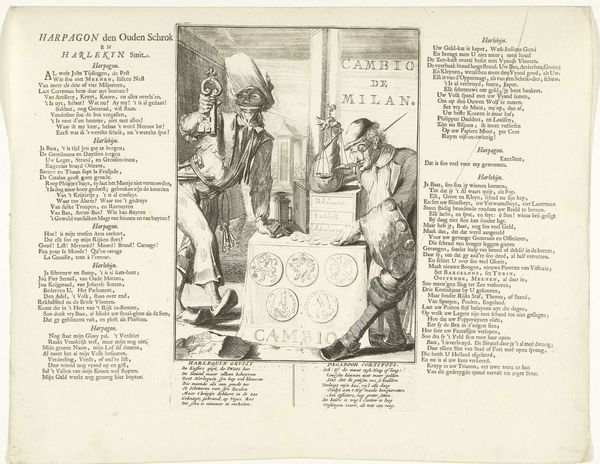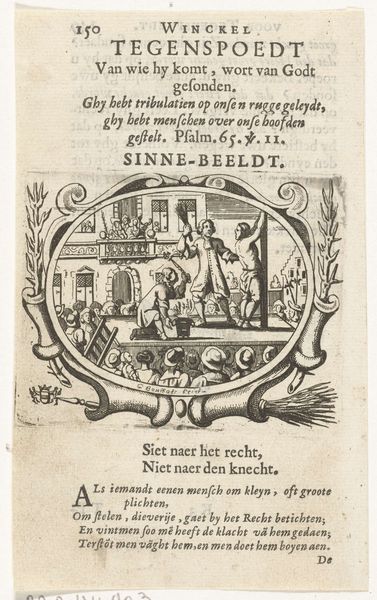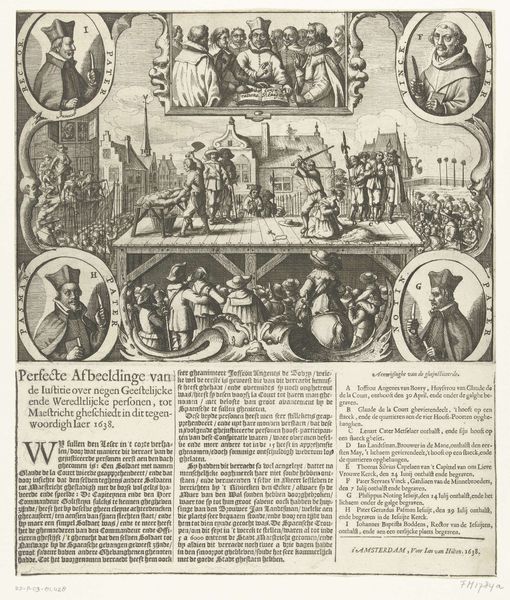
print, textile, engraving
#
narrative-art
#
baroque
# print
#
old engraving style
#
textile
#
cityscape
#
genre-painting
#
engraving
Dimensions: height 309 mm, width 302 mm
Copyright: Rijks Museum: Open Domain
Editor: So, we’re looking at "De slapende boer van Stolwijk, 1707" – “The Sleeping Farmer of Stolwijk” – by B. van Kempen, an engraving. It's striking how detailed it is, almost like a cartoon with these little scenes surrounding a central image. I'm immediately drawn to the text underneath, which seems crucial to understanding the image. What can you tell me about this piece? Curator: Indeed! This print, made in 1707, functions as a piece of social commentary embedded within a popular visual culture. Engravings like this served a vital role in disseminating opinions and satirical critiques during the Dutch Golden Age. Look closely at the central image; a man lies asleep in bed, while other figures seem to be gesturing and discussing him. Editor: It looks almost like a formal visit to someone who’s sick – but if he's asleep, are they talking about him behind his back? What’s the cultural context here? Curator: Precisely! The surrounding scenes and accompanying text offer context. This engraving criticizes Dirk de Bakker, a reed-cutter, for "sleeping" on his duties – likely, he shirked communal duties or wasn't diligent in his work. The scenes are Stolwijk's cityscape, possibly depicting various locations where his negligence impacted the community. It is designed to hold Bakker accountable within the community via a highly public form of mockery. Editor: So the visual and the textual elements work together to publicly shame him? It’s fascinating to see art used as a tool for social pressure. What impact would something like this have had? Curator: The impact would depend on several factors, including the prominence of B. van Kempen, how well the engraving resonated with local grievances, and the existing social tensions in Stolwijk. By turning de Bakker into a widely available image of ridicule, he's publicly branded as lazy and irresponsible. It also suggests how moral authority and communal expectations were visualized and reinforced through print culture at that time. Editor: That's so different from how we usually think of art. I’m seeing it as a tool to regulate behavior. Thank you, I learned so much. Curator: My pleasure. Reflecting on such pieces gives us crucial insight into the relationship between art, social control, and the shaping of public opinion in the past.
Comments
No comments
Be the first to comment and join the conversation on the ultimate creative platform.
